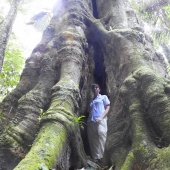
Is It Necessary For Everyone To Hike To Machu Picchu Ruins?
Are you confused about the hiking situation at the ancient city of Machu Picchu? Does everyone have to "hike" to enjoy the Inca citadel? I'm going to describe the various elements of traditional tours on the circuits inside the city and the hikes to Machu Picchu, as well as the terrain you can expect to encounter on your trip. And I will provide suggestions to help you prepare and maximize your enjoyment at the ancient wonder . The first thing we have to do is define the word "hike."
What if you don't want to hike to Machu Picchu?
We get emails and messages from travelers inquiring about "hiking Machu Picchu?" What does this mean? Isn't there a shuttle bus to take people up to the main entrance to the national park? What if you don't want to "hike?" It's confusing to understand the perspectives of what some people envision as a stroll through the authentic streets of an outdoor exhibit of an ancient Inca city, or an arduous trek with steep narrow, uneven stone steps, rough cobblestone paths, and terraces without handrails or guardrails - not to mention trip hazards galore! It's not as bad as it sounds. But understanding the various kinds of terrain you may encounter could be helpful, don't you think?
What's the difference between hiking the easy 1-day Inca Trail and hiking inside Machu Picchu National Park?
The Inca Trail hike is a separate activity that requires permits that can only be acquired by licensed tour operators (like Adis Adventure Travel for instance!). Then there are the hikes inside the park, which are part of the Machu Picchu online booking system. Anyone can buy a ticket for one of 4 hikes inside the park.
1. Wayna Picchu Hike + Circuit #4 (lower) AKA Huayna Picchu - the most treacherous - if you want to call it that - with steep, tight steps and stone ladders, some with cables to hang on to. And some without. Not to mention there's a little cave that requires you to slide through on your belly.
2. Huchuy Picchu Hike + Circuit #4 (lower) - little baby hike on a knoll right next door to Wayna Picchu.
3. Inca Bridge + Circuit 1 or 2 - accessed from the upper terrace. It's a short easy, 30-minute hike to view a really old plank of worn wood thrown across a gap in a section of broken train in front of a granite wall. You don't actually walk on the wood. You take your pictures, then turn around and go back to the upper terrace.
4. Machu Picchu Montana + Circuit 3 - accessed from the upper terrace. This is the longest hike in the park and most visitors should allow at least 3 hours roundtrip. Then segue right into the tour of the lower circuit #3 in the ancient city.
It's important to get an idea about the difference between the upper circuits and the lower circuits, so we wrote an entire article about that. CLICK HERE.
How do visitors get to the main entrance at Machu Picchu?
This is where I think the most confusion about hiking occurs. Trains deliver passengers all day to the station located in the village of Aguas Calientes. From there, people either take the shuttle bus for a 30-minute ride up an unpaved switchback road to the main entrance. Or sometimes people, who have all the time in the world, will walk up from the village to the entrance. I would allow 2 hours up + 1 hour (or more) return. The net savings is $24 USD in shuttle bus fees. By the time you take the bus to the main entrance, the amount of walking up to that point is manageable for most travelers. Once you enter the main gate at Machu Picchu, you will encounter stone stairs, cobbled walkways, and dirt paths. Be sure to save some of your gumption to give you the strength to explore the actual city and not just the dusty road leading to the city. This is where it's worth it to understand the difference between the terrain of the upper circuits in contrast to the lower circuits. (CLICK HERE to read more about the difference between upper and lower circuits)
So. Although it's not necessary to hike the Inca Trail to get to Machu Picchu, or even do one of the hikes inside the national park, visitors are expected to be able to walk up and down steps and stone stairs with uneven rise, and without handrails. Lately, in order to preserve the integrity of the original city, the park has launched a plan to install wooden staircases with handrails to reduce the wear and tear on the original Inka stonework. Even with challenging terrain, it's not as bad as it sounds. Various potential hindrances are spread out and all circuits are one-way traffic, There's plenty of opportunity to stop and pretend to enjoy the view while you catch your breath!













